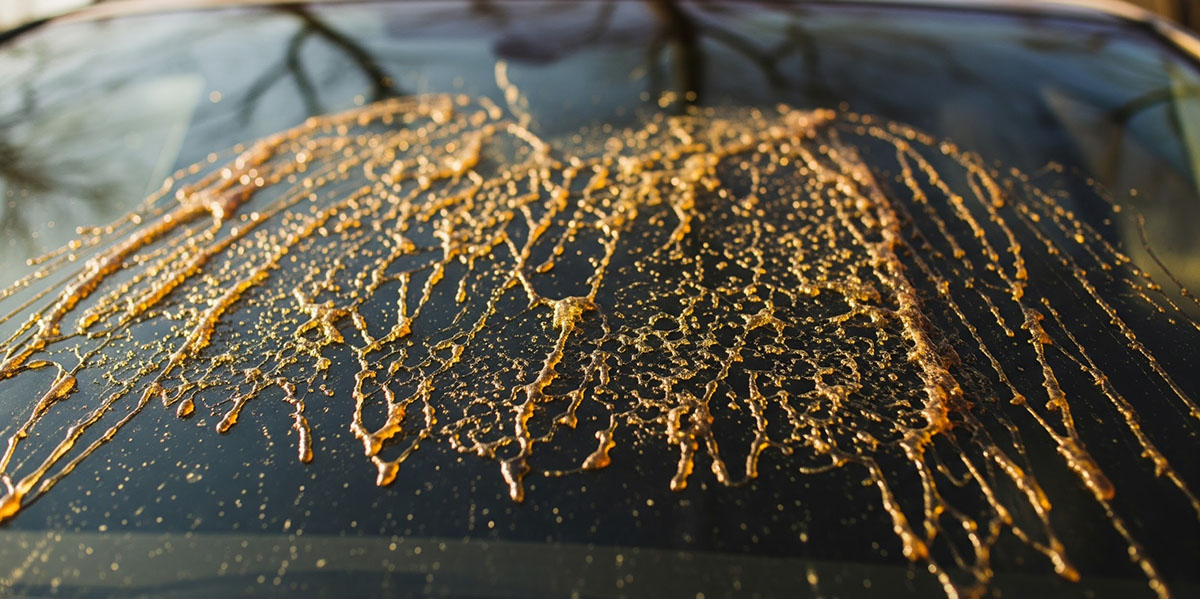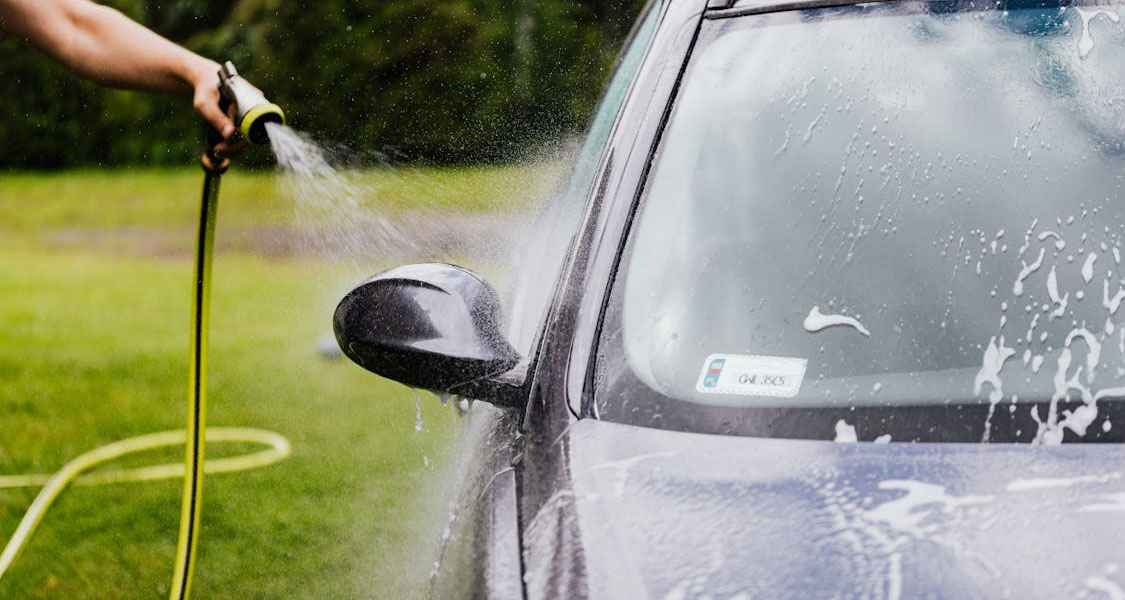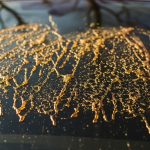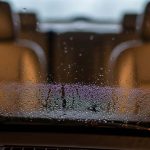
Tree sap on a windshield can create a hard-to-remove mess that gets worse the longer it stays. In Canada, sap contamination is common because of the high number of maple and coniferous trees. At Auto Glass Zone Oakville, we provide professional windshield repair and replacement services to help drivers deal with damage caused by sap, chips, or cracks. Maple sap contains up to 5% sugar and is water-based, while conifer resin contains non-polar compounds like terpenes and resin acids. These stick to glass and paint and are resistant to basic car washes.
To remove sap properly, you need a method that matches the chemistry of the substance on your windshield. This guide explains how to clean tree sap off your windshield safely and effectively.
Why Tree Sap Sticks to Windshields
When tree sap lands on your windshield, it bonds with the surface. Maple sap, being mostly water and sugar, is easier to remove when fresh. Pine or spruce resin, on the other hand, is made of non-polar terpenes and resin acids. These harden over time and resist water-based cleaning.
The compounds in resin create strong bonds with glass or clear coat finishes. As they dry, they oxidize and become more difficult to remove. This is why hardened sap often needs stronger solvents than fresh sap.
Types of Sap and What You’re Dealing With
Understanding the difference between maple sap and conifer resin helps you choose the right cleaning method.
| Feature | Maple Sap | Conifer Resin |
| Main Compounds | Water, sugars | Terpenes, resin acids |
| Solubility | Water-soluble | Insoluble in water |
| Texture | Thin, sticky liquid | Thick, sticky paste that hardens |
| Cleaning Solvent Needed | Water or semi-polar solvents | Non-polar or strong organic solvents |
This table helps explain why some products work and others don’t when trying to remove tree sap from glass.
How to Get Sap Off Windshield: Step-by-Step Process

Step 1: Wash the Area
Start with warm, soapy water and a microfiber cloth. This removes loose dirt and softens water-soluble substances like fresh maple sap. It also prepares the surface for solvents.
Step 2: Use Solvents in the Right Order
Use the least aggressive option first and only move to stronger ones if needed.
| Tier | Cleaning Agent | Best For | Safety Level | Notes |
| 1 | Isopropyl Alcohol (IPA) | Fresh or lightly hardened sap | Low | Effective and safe for most surfaces |
| 2 | Mineral Spirits / WD-40 | Hardened resin | Medium | Can strip wax or sealants |
| 3 | Acetone | Baked-on resin on glass | High | Use only on glass, not paint |
To apply, soak a microfiber cloth or cotton ball in the solvent. Dab the sap directly and let it sit for a few seconds. Gently wipe the spot using a clean cloth.
This method is the safest way to remove hardened tree sap from a car windshield without damaging nearby surfaces.
Step 3: Mechanical Removal for Glass
For old, dried sap that solvents can’t handle, use a razor blade. Hold the blade nearly flat to the windshield and scrape carefully. Do not use this method on paint or plastic trim.
Step 4: Final Cleanup
Once the sap is gone, clean the glass with an automotive glass cleaner. If solvents were used near painted surfaces, reapply wax or sealant to restore protection.
How to Prevent Tree Sap On A Car Windshield
Prevention is the best way to deal with sap. These steps can reduce the chance of contamination:
- Avoid parking under trees: Especially pines and maples during spring and summer.
- Apply protective coatings:
- Wax and sealants fill in pores and make it harder for sap to stick.
- Ceramic coatings last longer and offer better resistance to sticky substances.
- Paint protection film (PPF) creates a physical barrier and is easy to clean. Some types even self-heal minor marks.
These coatings make sap easier to remove and reduce the need for aggressive cleaners.
FAQs
What can I use to get sap off my car?
The safest starting point is isopropyl alcohol, which removes fresh or lightly hardened sap. For tougher spots, mineral spirits or WD-40 can help. Acetone should only be used on glass if other methods fail.
How do I remove pine sap from the windshield?
Pine sap hardens quickly and bonds strongly to glass. Start with isopropyl alcohol, then move to mineral spirits if needed. For very old deposits, acetone or careful scraping with a razor blade works best on the glass.
Will vinegar remove tree sap from a car?
Vinegar is not strong enough to dissolve hardened resin because it is a polar solution and pine resin is non-polar. While it may soften fresh maple sap slightly, it is not effective for removing tree sap from a car.
How to get sap off the windshield without rubbing alcohol?
Use warm, soapy water for maple sap. If that doesn’t work, try mineral spirits or WD-40 on glass. Avoid strong solvents unless absolutely needed.
How to get old sap off the windshield?
Use a razor blade held flat against the glass. For very old sap, apply acetone briefly, then scrape carefully. Never use acetone on painted surfaces.
Summary
Tree sap removal depends on identifying the type of sap and using the right approach. Maple sap comes off with water or mild alcohol. Resin from conifers needs stronger solvents like mineral spirits or acetone. Start with the safest option and move up only if needed. Use blades only on glass.
If you’re wondering how to remove hardened tree sap from a car windshield, follow this structured process and avoid shortcuts. The right steps will save you from damaging your vehicle and help keep your windshield clear.
How We Can Help
Tree sap can be stubborn, and in some cases it leaves behind marks that basic cleaning cannot fully remove. If your windshield has been damaged or your visibility is reduced, professional attention may be the safest option.
At Auto Glass Zone Oakville, we provide reliable windshield repair and replacement services to restore clarity and safety. You can request a free quote online to get started quickly and have our team handle the rest.
References
- Taylor, Fred H. Variation in Sugar Content of Maple Sap. Bulletin 587, Vermont Agricultural Experiment Station, Univ. of Vermont and State Agricultural College, Mar. 1956.






